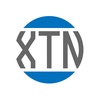The integration of Health Information Technology (Health IT) in emergency response and disaster management has become increasingly vital in recent years. This article delves into the multifaceted role of Health IT in these critical areas, offering insights into its impact, challenges, and future directions.
Emergency response and disaster management are complex fields that require rapid, coordinated, and efficient actions to mitigate the impacts of unforeseen events. Health IT plays a crucial role in enhancing the effectiveness of these efforts, particularly in the healthcare sector. This technology encompasses a wide range of tools and systems, from electronic health records (EHRs) to telemedicine, all designed to improve patient care and facilitate swift medical response during emergencies.
The Impact of Health IT on Emergency Response
Enhanced Data Accessibility and Sharing: Health IT enables the seamless sharing of patient information among healthcare providers. During emergencies, quick access to patient records, including medical histories, allergies, and current medications, is crucial. EHRs and cloud-based systems allow healthcare professionals to access this data promptly, leading to more informed decision-making and timely treatment.
Real-time Communication: In disaster scenarios, communication breakdowns can have dire consequences. Health IT facilitates real-time communication among first responders, hospitals, and public health agencies. Tools like secure messaging apps and telehealth platforms ensure that vital information is relayed without delay, enhancing coordination and response efficiency.
Health IT in Disaster Management
Resource Allocation and Management: Health IT systems can analyze data from various sources to predict resource needs and optimize their allocation. For instance, during a pandemic, predictive analytics can estimate the required number of beds, ventilators, and medical personnel in different regions.
Public Health Surveillance: Health IT is instrumental in public health surveillance, tracking the spread of diseases, and identifying outbreak patterns. Systems like Geographic Information System (GIS) mapping provide visual representations of data, aiding in strategic planning and response.
Challenges in Implementing Health IT in Emergencies
Interoperability Issues: A significant challenge in utilizing Health IT in emergencies is the lack of interoperability among different systems. This can hinder the efficient exchange of information and delay response times.
Data Security and Privacy Concerns: Ensuring the security and privacy of patient data is paramount, especially when using cloud-based systems and telehealth services. In emergencies, the rapid sharing of information must be balanced with stringent data protection measures.
Case Studies: Health IT in Action
Response to Natural Disasters: Following natural disasters like hurricanes or earthquakes, Health IT systems have been used to track patient evacuations, manage supplies, and coordinate care across different facilities.
Pandemic Response: The COVID-19 pandemic highlighted the role of Health IT in managing public health crises. Telehealth became a critical tool for delivering care, and data analytics played a key role in understanding the spread of the virus and allocating resources.
Future Directions of Health IT in Emergency Response
Integration of Artificial Intelligence and Machine Learning: The future of Health IT in emergency response lies in the integration of AI and machine learning. These technologies can enhance predictive analytics, improve decision-making, and automate certain aspects of emergency response.
Expanding Telehealth Capabilities: Expanding telehealth services can ensure continuous care during emergencies, especially in remote or hard-to-reach areas. This includes not only virtual consultations but also remote monitoring of patients.
Conclusion
Holon Solutions has truly redefined the landscape of healthcare technology by emphasizing the human element in its services. This innovative company, inspired by the concept of a "holon," showcases a unique blend of independence and interdependence, reflecting its approach to healthcare solutions. Their commitment to enhancing human connections in healthcare through advanced technology is not just a mission statement; it’s a tangible reality seen in the impact of their products and services.
At the core of Holon’s offerings is a sophisticated platform that transcends traditional healthcare technology. This platform exemplifies their dedication to streamlining healthcare processes, simplifying complex procedures, and most importantly, focusing on patient-centric care. By employing proprietary sensor technology, Holon adeptly aggregates patient data from various sources, integrating it into clinical workflows seamlessly. This not only facilitates efficient data management but also significantly reduces the time healthcare professionals spend on administrative tasks, allowing them to concentrate on providing care.
Holon's impact is particularly noteworthy in how it addresses the challenge of professional burnout in the healthcare sector. The automation and simplification of processes enable medical professionals to refocus on their primary role: patient care. This shift is crucial in an industry where burnout is a common issue, directly affecting the quality of care provided to patients.
Moreover, Holon’s approach to healthcare technology is characterized by its dual focus. On one hand, they provide tools that yield tangible business benefits, streamlining operations and improving efficiency. On the other, they emphasize the profound impact their technology has on human interactions and outcomes. This balance is what sets Holon apart in a competitive field, demonstrating that technology can be a powerful tool in enhancing the human aspects of healthcare.
The Holon Community, a cornerstone of their strategy, is a testament to their commitment to optimizing healthcare processes. By ensuring efficient delivery of patient data to any care point and integrating smoothly with existing systems, Holon not only enhances professional satisfaction but also significantly improves the quality of patient care.
In their Innovation Lab, Holon’s ethos of creativity and exploration is brought to life. Here, teams are encouraged to think boldly and innovate, with a focus on customer empathy and agile responses. This environment fosters the development of groundbreaking solutions that are not just technologically advanced but also human-centric.
In conclusion, Holon Solutions stands as a beacon of innovation in healthcare technology. Their relentless pursuit to improve healthcare experiences speaks to a larger vision: a healthcare landscape where technology and human care coexist harmoniously. By addressing challenges like professional burnout, administrative strain, and enhancing patient care, Holon is not just innovating; they are revolutionizing the way we think about and interact with healthcare technology. Their vision of a more humane approach to healthcare innovation is a guiding light for the industry, promising a future where technology serves not just as a tool, but as a bridge to better, more empathetic patient care.


No comments yet